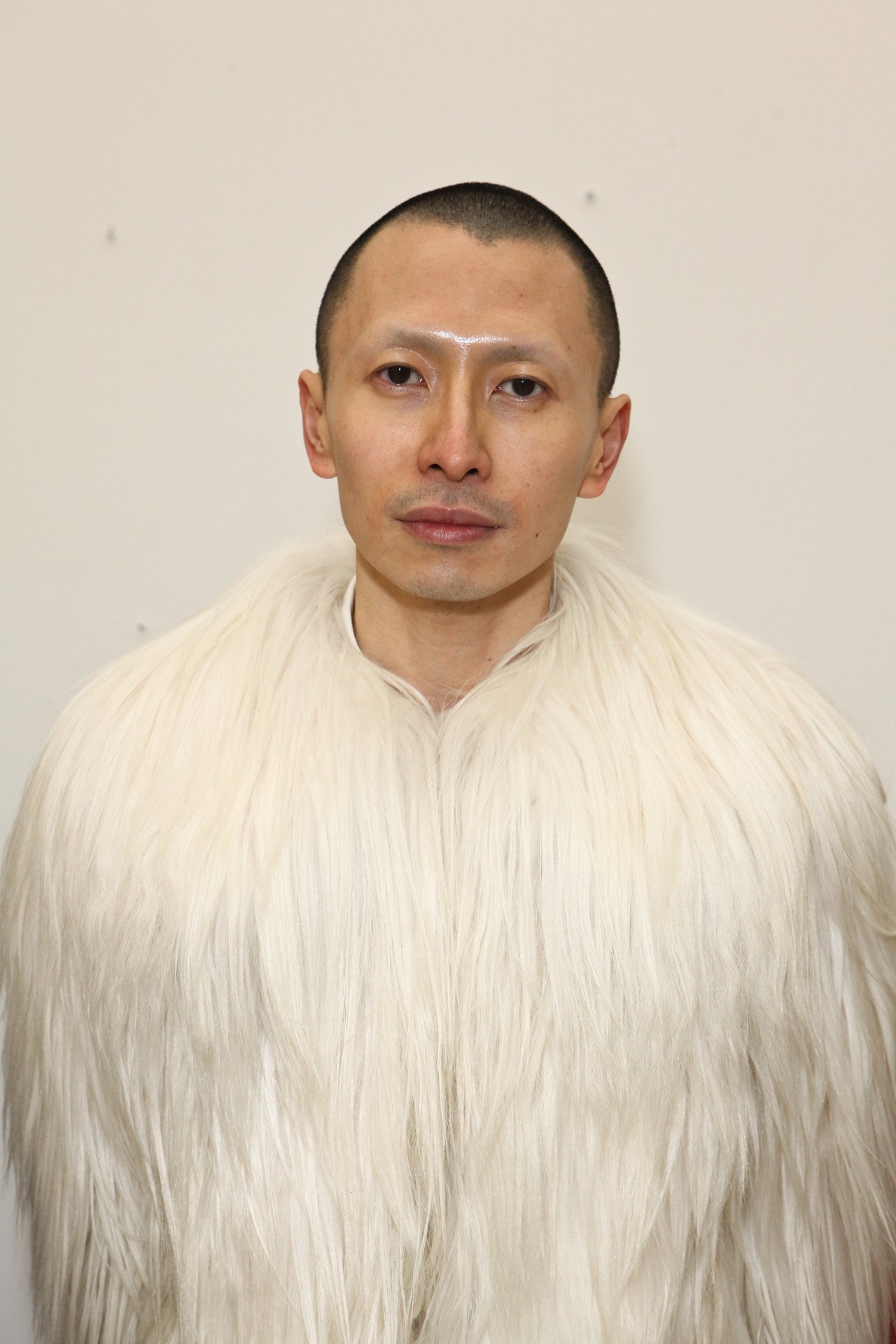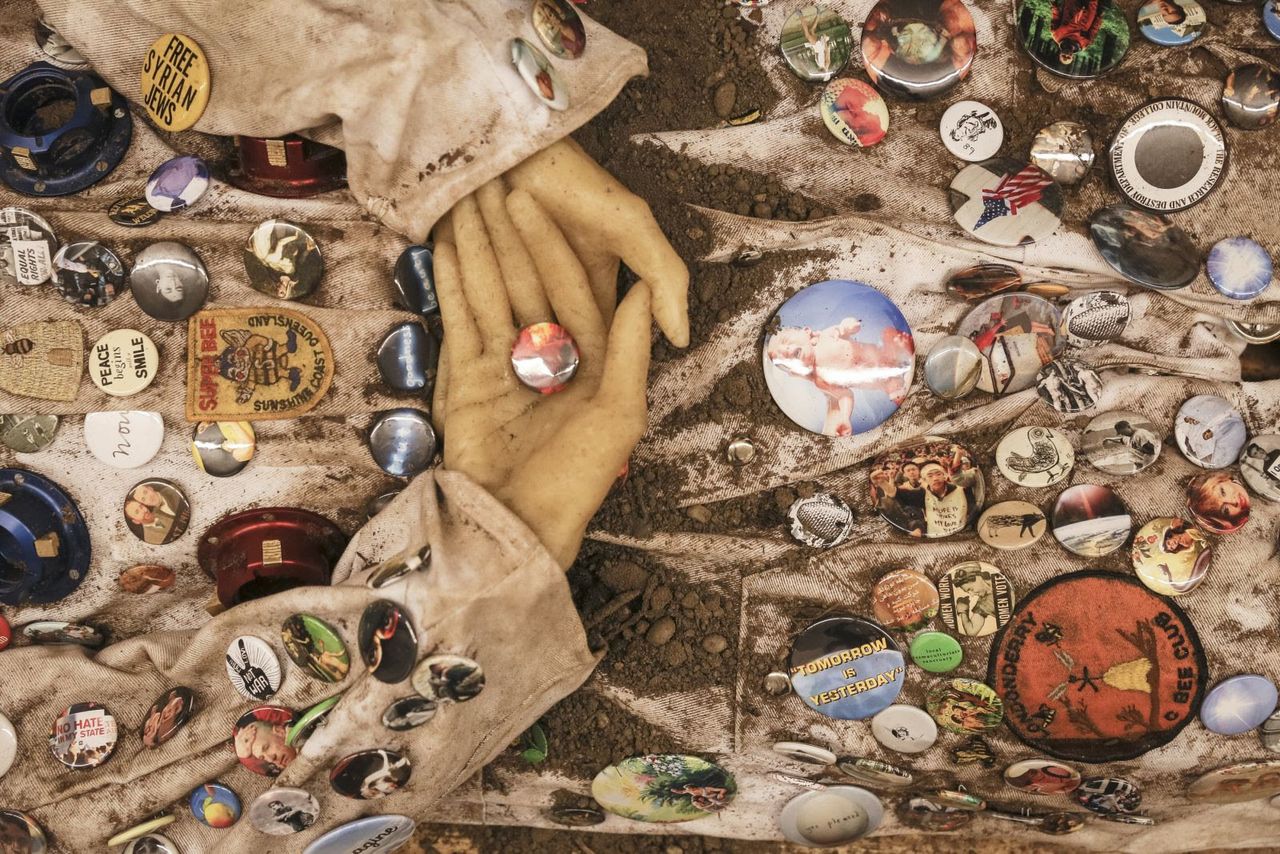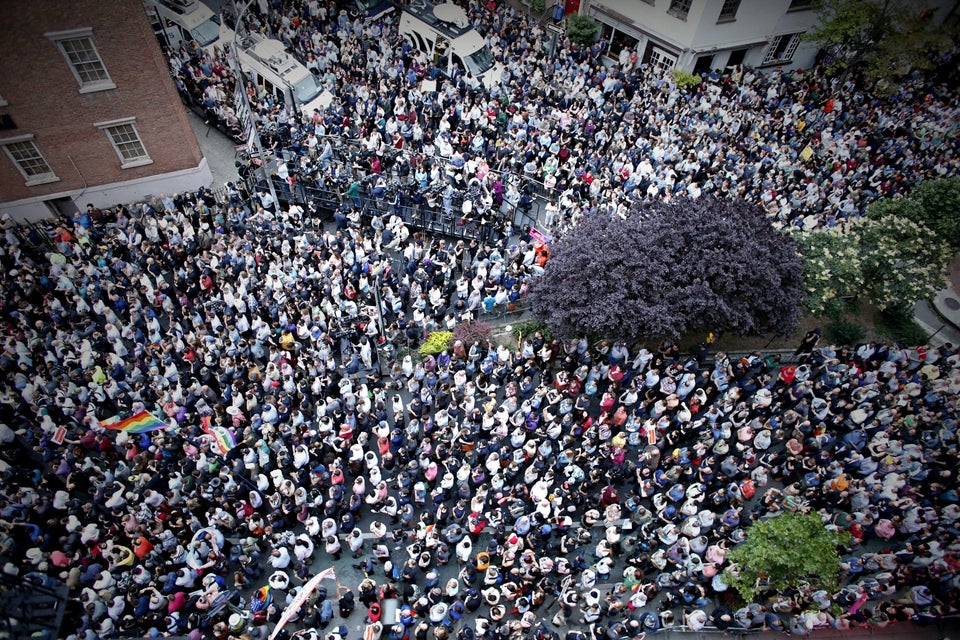On June 12, 2016, a gunman opened fire at a queer nightclub in Orlando, Florida, killing 49 people and injuring 53 others. The massacre was the deadliest shooting in United States history. In the days since, countless individuals have grieved the young, innocent and beautiful lives cruelly cut short through this act of hate and questioned a world in which such a sickening gesture of inhumanity could occur, again and again.
"I was talking to someone about how, as artists, we are responsible, we have to do something," artist Terence Koh explained in an interview with The Huffington Post. He speaks softly and silvery, his voice one that immediately makes you want to temper your own in response. "He said back to me, 'We are all responsible.'"
On the evening of June 23, Koh performed a tribute to the victims of the Orlando massacre in the form of a chanting ceremony. Inspired by a ritual he witnessed at a Buddhist monastery, the Chinese-Canadian artist chanted the names of the 49 victims inside a bee chapel, a space in his ongoing exhibition at Andrew Edlin Gallery in New York. The chapel was connected to a microphone that linked to an antenna, which transmitted the sounds that moved through it into outer space, spreading Koh's message of love into the universe.
The bee chapel features a steep mound of dark earth, on top of which rests a metal mesh structure housing the swarming insects. Their sounds, smells and vibrations fill the room. "I thought it would be nice for the bees to also listen to the names as well," Koh said, "so the bees would know the stories of the names."
Koh began the performance by blowing a shell horn, one of the sculptures featured in the "Bee Chapel" exhibition, six times into the Manhattan streets surrounding the gallery, alerting the public of the ceremony about to take place. He then proceeded to play a Tibetan gong while chanting the names of the 49 victims one by one.
"I went to a monastery where they were chanting the name of Buddhists that had passed away," Koh recalled. "By chanting the names, they became living presences again. It's another way of storytelling. So I tried to almost sing the names, instead of just saying them, to celebrate them in a loving and beautiful way." Koh read most names in alphabetical order, except for Juan Ramon Guerrero and his partner Christopher “Drew” Leinonen, who were in love and planned to be married. Koh read their names alongside one another.
The heart of the tribute, Koh explained, was sparked by Namu Dai Bosa, a Buddhist chant that refers to the idea, as the artist put it, "that all beings are enlightened in the past, present and future. Every atom in existence is alive and present." To fully amplify the scope of this concept, Koh broadcast the names he spoke into outer space.
"It spread all the good energy in the room out into the universe," he said. "It was like singing them like a vibration of light."
After the chant, six films played simultaneously and silently on the gallery walls, representing iconic moments in cinema for the LGBTQ community. "Beautiful People" by David Wojnarowicz, "Pink Flamingos" by John Waters, "Jihad for Love" by Parvez Sharma, "Raspberry Reich" by Bruce La Bruce, "Flaming Creatures" by Jack Smith, and "Bijou" by Wakefield Poole streamed as soundless, moving pictures, overlapping and shapeshifting into one another.
"It was almost like a nightclub," Koh said.
As the films played on, the gallery space morphed from a performance into a gathering, with participants eating pizza and popcorn, sharing stories, being together. As Koh explained: "It made me feel like everybody in there was participating. It’s a way of human storytelling, a festive atmosphere to celebrate life."
This profound tribute to Orlando's victims is a stark departure from the work that made Koh's name known throughout the art scene in the early 2000s. Back then, Koh held the reputation of being a "bad boy" -- or at least the art world equivalent. He dressed only in white and often in monkey fur, took vows of silence before scheduled interviews, and notoriously dipped his feces in gold leaf and sold it for for half a million dollars at Art Basel Miami Beach. He first became known for his queer punk website and zine asianpunkboy.com, before evolving into a full-fledge art darling who seamlessly blended darkness and party antics.
And then, in 2014, Koh cut off ties with his gallery representatives and moved upstate to New York's Catskills. He got rid of his cell phone, stopped reading the news, and many assumed he had quit the art world all together. "Bee Chapel" marked Koh's return to the art world, and a very different Koh it was. Meditative, somber, concerned with the essential questions of love, death and nature that make up human existence. "I want to be responsible, to bring love and light into the world," Koh expressed.

As an artist, one takes responsibility by making work, translating the darkness that plagues the world around us into brief spurts of beauty that can reach for understanding and bring about comfort and hope. But, as Koh stated, those of us who aren't artists have a responsibility in the face of iniquity as well.
"We carry the spirit ourselves wherever we are," Koh said. "Anybody that is anywhere can take a moment to remind ourselves about the very present moment we have. There are so many amazing, positive possibilities for us as human beings, we have to remember."
He paused before speaking again. "I’m walking in the bee chapel right now and there are mementos of flowers and pictures that people left behind. I think it’s important we all come together to do things like this. There is so much fear and hate in the world, it’s our responsibility to give love and light. Whether it’s just people having a dinner and a conversation, it all spreads out. We can all make a change."

